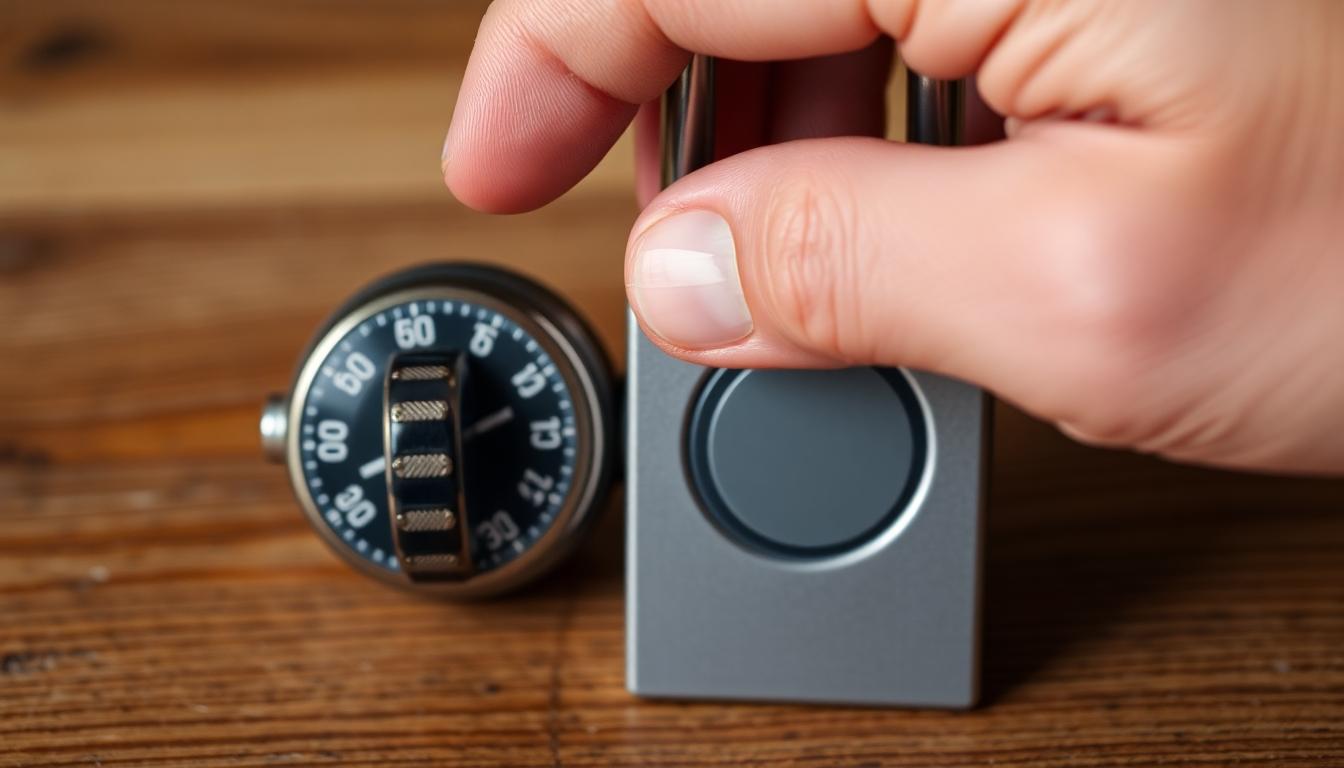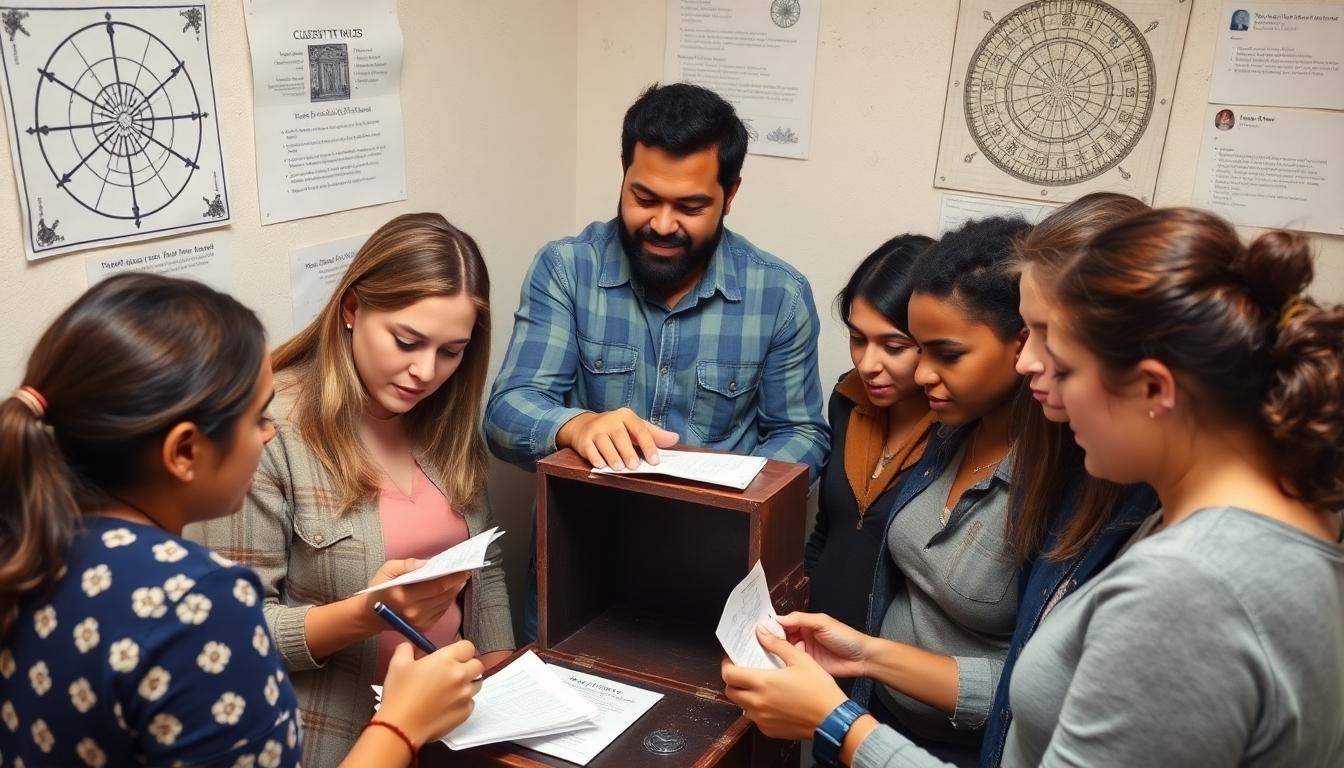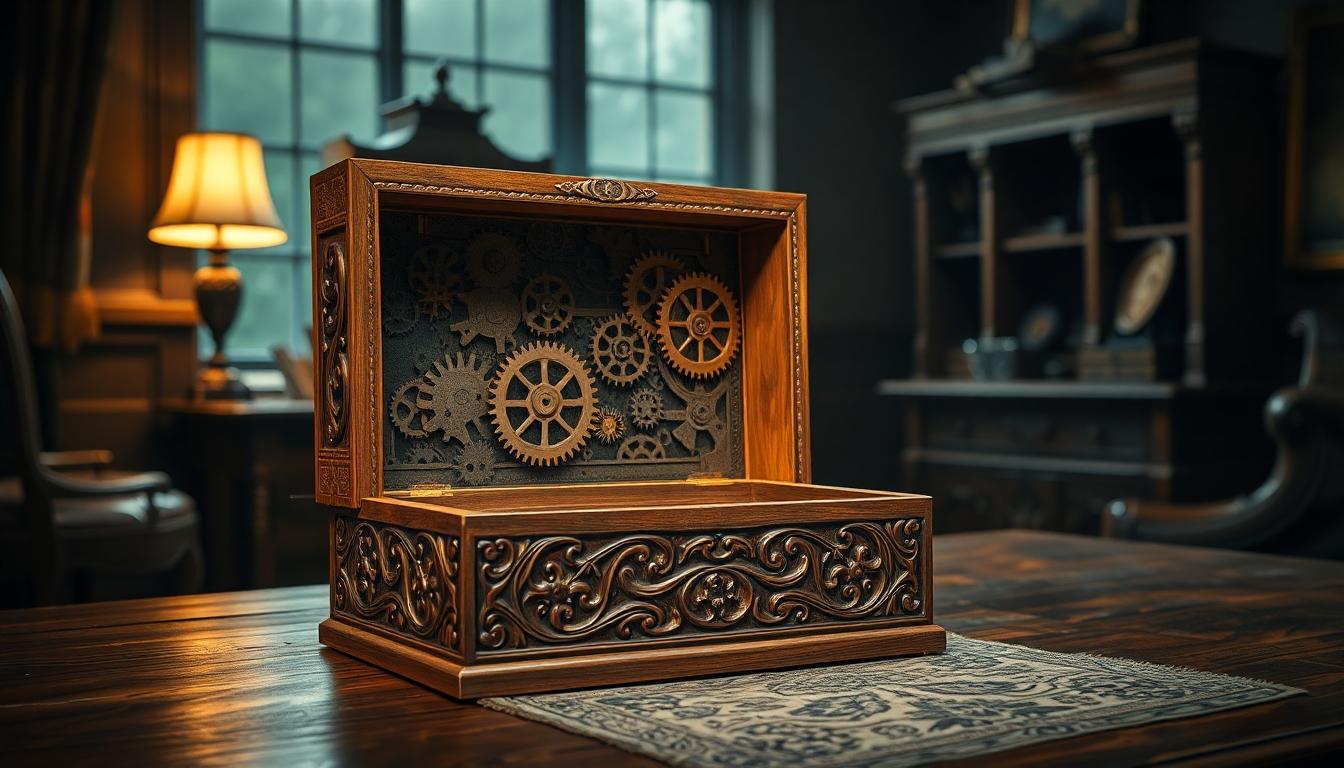Are you ready to unlock the intriguing area of lock riddles? These brain-teasing puzzles challenge our problem-solving skills while entertaining us with their clever wordplay and logical twists. Whether you’re a puzzle enthusiast or just looking for a fun mental workout, lock riddles offer the perfect combination of challenge and satisfaction.
We’ve gathered some of the most intriguing lock riddles that will test your wit and keep you guessing. From simple mind-benders to complex conundrums, there’s something here for everyone. These riddles don’t just exercise your brain—they teach us to think outside the box and approach problems from different angles. Join us as we explore these captivating puzzles that have been unlocking creative thinking for generations.
Understanding the Appeal of Lock Riddles in Escape Rooms
Lock riddles have become a cornerstone of modern escape room experiences, captivating participants with their unique blend of challenge and reward. We’ve observed that these puzzles create an immersive environment where players must engage both logical and creative thinking simultaneously. The popularity of lock riddles in escape rooms stems from several key factors that enhance the overall gaming experience.
Teams facing a locked box or door with a cryptic clue experience an immediate sense of mystery and intrigue. This initial encounter triggers curiosity and establishes a clear objective that brings players together. Lock riddles serve as perfect pacing mechanisms within escape room narratives, creating natural progression points that guide participants through the storyline.
The satisfaction of hearing that distinctive “click” when a combination is correctly entered provides instant feedback and a tangible reward for mental effort. Players report experiencing a genuine dopamine rush when successfully solving these challenges, reinforcing their engagement with the room’s puzzles. Many escape room enthusiasts specifically seek out venues with reputation for clever lock riddles, showing how central these puzzles have become to the industry.
Game designers leverage various types of lock mechanisms to create diverse problem-solving opportunities. Combination locks require sequential thinking, directional locks test spatial reasoning, and word locks challenge linguistic creativity. The best escape rooms carefully balance difficulty levels across different lock puzzles, ensuring both experienced puzzlers and newcomers can contribute to answers.
Lock riddles often incorporate elements of the room’s theme, strengthening immersion and making the puzzles feel integral to the story rather than arbitrary obstacles. We’ve found that memorable escape room experiences frequently feature lock puzzles that connect directly to narrative elements or physical aspects of the environment. This integration of story and puzzle mechanics elevates lock riddles beyond simple barriers to become meaningful components of the adventure.
10 Classic Lock Riddles That Challenge Your Problem-Solving Skills

Numerical Combination Challenges
Numerical lock riddles test your ability to decipher clues and identify the correct sequence of digits. These puzzles often present mathematical problems that require careful analysis to reveal the combination. Common variations include riddles where the numbers are hidden within a story or scenario that requires logical deduction. Many numerical challenges incorporate mathematical operations such as addition, multiplication, or pattern recognition to guide you toward the solution. Popular examples feature clues like “The second number is twice the first” or “The sum of all digits equals 12.” Advanced versions might incorporate multiple layers of problem-solving where solving one clue reveals information needed for the next digit. Mastering these challenges improves both mathematical thinking and careful attention to detail.
Directional and Pattern-Based Lock Puzzles
Directional lock puzzles challenge players to determine the correct sequence of movements based on visual or textual clues. These brain-teasers typically involve identifying patterns that translate into up, down, left, or right movements on a lock dial. Common examples include following a maze path or tracking the movement of an object through a series of instructions. Many pattern-based riddles incorporate symbols, colors, or shapes that must be interpreted as directional cues. Advanced versions might require players to overlay multiple patterns or reverse-engineer a sequence from its end result. Map-based directional puzzles often appear in escape rooms, where players must navigate from one location to another following exact rules. Solving these puzzles enhances spatial reasoning abilities and trains the brain to recognize subtle patterns within complex information.
7 Creative Lock Riddles for Educational Settings

Math-Based Lock Riddles for Classroom Engagement
Math-based lock riddles transform ordinary lessons into exciting problem-solving adventures. Students eagerly tackle equations when they know a successful solution unlocks a prize or advances them to the next activity. Try challenging your class with the riddle: “I’m thinking of a three-digit number where the first digit is half the second, and the third is twice the first. The sum of all digits equals 14. What’s my combination?” (Answer: 248). Another captivating option presents students with seemingly random numbers around the classroom that must be arranged according to prime factorization principles. Teachers can also carry out lock puzzles requiring students to identify the correct sequence using arithmetic progressions, making pattern recognition a practical skill. These mathematical brain teasers simultaneously reinforce curriculum concepts while developing critical thinking abilities in a format that feels more like play than schoolwork.
Historical Lock Riddles That Teach While Entertaining
Historical lock riddles breathe life into past events by challenging students to decode messages using period-appropriate ciphers and contexts. Create a Revolutionary War-themed puzzle where students must identify key dates of battles to unlock a message from George Washington. Alternatively, develop an ancient Egyptian hieroglyphics challenge where translating symbols reveals the combination to access “treasure” from King Tut’s tomb. Medieval castle-themed riddles can incorporate elements of feudal society, requiring students to arrange nobles in correct hierarchical order to “unlock the castle gates.” Ancient Rome offers rich material for numeric riddles based on Roman numerals, where students convert between number systems to discover hidden codes. These historical puzzles not only reinforce important dates and facts but also demonstrate how people throughout history used codes and ciphers, making the learning process interactive and memorable rather than relying on rote memorization.
5 Digital Lock Riddles in Modern Escape Games

QR Code and App-Based Lock Challenges
Modern escape rooms have embraced technology with QR code and app-based lock challenges that elevate the traditional puzzle experience. Players must scan strategically placed QR codes using smartphones to reveal hidden clues or unlock digital safes. These tech-driven riddles often require players to download a special escape room app that interacts with various elements throughout the game space. Many designers incorporate augmented reality features where scanning a code reveals virtual objects or messages that exist only when viewed through the device’s camera. Advanced escape games might require players to solve a series of interconnected QR puzzles, each one revealing a fragment of a larger solution. The beauty of these digital challenges lies in their ability to seamlessly blend physical exploration with digital interaction, creating multi-layered puzzle experiences impossible to achieve with analog methods alone.
Password and Sequence Lock Puzzles
Digital password and sequence lock puzzles have transformed escape room experiences by introducing complex, multi-step challenges. Players often encounter touchscreen interfaces requiring exact sequences based on subtle environmental clues scattered throughout the room. These digital locks frequently carry out time-sensitive elements where codes must be entered within exact intervals or in sync with other game events. Sophisticated escape rooms incorporate adaptive password systems that change based on player actions, forcing teams to carefully track how their decisions affect potential answers. Some digital sequence puzzles feature decoy buttons or false feedback mechanisms designed to mislead players who haven’t fully understood the underlying logic. Tech-savvy escape game designers program pattern recognition challenges where players must replicate visual or audio sequences exactly as they appear, testing memory and attention to detail simultaneously. The flexibility of digital interfaces allows for narrative integration where entering the correct password triggers story progressions through video clips, audio files, or dramatic lighting changes.
8 DIY Lock Riddles You Can Create at Home

Creating your own lock riddles at home offers a fun way to challenge friends and family while exercising your creativity. With just a few household items and some clever thinking, you can design puzzles that rival commercial escape rooms.
Everyday Objects as Lock Puzzle Components
Combination locks become instantly more intriguing when paired with common household items. Start by repurposing a jewelry box with a simple padlock, hiding clues around your home that lead to the combination. Mason jars work perfectly as containers for puzzle elements—fill them with colored water and mark measurement lines that correspond to numbers for a code. Consider using books on your shelf as cipher tools by creating puzzles where exact page numbers, paragraph counts, or first letters form a lock combination. Transform your kitchen timer into a time-sensitive challenge where solving a riddle within the countdown reveals the next clue location. Old luggage with combination locks provides ready-made puzzle containers without requiring additional purchases. Empty tissue boxes can cleverly conceal small lockboxes or key components that players must discover. USB flash drives loaded with password-protected files create digital challenges that complement physical puzzles. Even ordinary playing cards can become puzzle components when arranged in exact sequences to reveal lock combinations.
Family-Friendly Lock Riddle Ideas
Treasure hunt lock riddles engage younger family members through progressive challenges leading to a “locked” prize. Create a birthday surprise by designing age-appropriate riddles where the solution components match the child’s new age. Picture puzzles work wonderfully for non-readers—use family photos cut into pieces that, when assembled correctly, reveal a lock combination on the back. Design a kitchen chemistry challenge where mixing safe household ingredients in the correct order creates a color change that corresponds to a number sequence. Bedtime story extensions transform favorite books into puzzle sources by hiding clues within the narrative that children must identify. Building block codes allow creative construction while incorporating numbers or colors that translate to a combination. Holiday-themed lock riddles add excitement to special occasions by incorporating seasonal elements into clues and answers. Memory matching games can double as puzzle components when paired cards reveal portions of a code that must be arranged correctly to open a locked container.
6 Mind-Bending Word-Based Lock Riddles

Anagram and Cryptogram Lock Challenges
Word-based lock riddles offer some of the most intellectually stimulating challenges in the puzzle industry. Anagram locks require players to rearrange letters from a given word or phrase to form a new term that serves as the solution. For example, players might encounter the clue “SILENT” and need to rearrange these letters to form “LISTEN” to unlock a combination. These puzzles test vocabulary skills while encouraging lateral thinking as participants must break free from seeing words as fixed entities.
Cryptogram challenges take word puzzles to another level by substituting letters with symbols, numbers, or other characters. Players must decode these substitutions to reveal the hidden message that contains the lock combination. A classic cryptogram might replace each letter with another letter according to a exact rule, such as shifting each letter three places forward in the alphabet. Solving these puzzles requires pattern recognition and perseverance, especially when working with longer encrypted messages.
Advanced cryptogram locks often incorporate multiple layers of encryption, requiring players to solve one level before tackling the next. These multistage puzzles create a deeply satisfying experience when the final solution emerges after sustained mental effort. The complexity can be adjusted by including partial translations, contextual clues, or frequency analysis hints that guide players toward the solution without giving it away entirely.
Multilingual Lock Puzzle Techniques
Multilingual lock puzzles add an international dimension to word-based challenges by incorporating foreign languages into the solution. Players might encounter clues in English that point to words in Spanish, French, or German that serve as the combination. These puzzles create an inclusive experience for players with diverse linguistic backgrounds while introducing others to new vocabulary and cultural concepts.
Translation-based locks often use common words or phrases that might be recognizable even to those without fluency in the target language. For instance, a puzzle might provide the English words “house,” “car,” and “book,” requiring players to translate them into French (“maison,” “voiture,” “livre”) and use the first letters to form the lock combination “MVL.” This technique bridges language barriers while promoting linguistic curiosity.
Word association across languages presents another fascinating challenge where players must identify connections between terms in different languages. Puzzles might use cognates (words that look similar across languages) or cultural references that link concepts across linguistic boundaries. Escape room designers often include translation resources or contextual hints within the room to ensure these puzzles remain accessible to all participants while maintaining their multilingual character.
How to Solve Lock Riddles: Expert Tips and Strategies

Start with a Methodical Approach
Tackling lock riddles requires a systematic approach rather than random guessing. First, examine all available clues thoroughly before attempting any answers. Many puzzle enthusiasts make the mistake of jumping to conclusions without gathering all the information. We recommend taking notes of every potential clue you encounter, as seemingly unrelated details often connect in unexpected ways. Creating a visual map of the clues can help organize your thoughts and reveal patterns that might otherwise remain hidden.
Look for Patterns and Sequences
Identifying patterns is crucial when solving lock riddles, especially those with numerical combinations. Pay special attention to recurring numbers, sequences that follow mathematical rules, or patterns that might represent dates or time. Fibonacci sequences, prime numbers, and perfect squares frequently appear in well-designed lock puzzles. Visual patterns like shapes, colors, or directional indicators should also be carefully examined, as they often translate into lock movements or combination entries.
Don’t Overlook the Obvious
Lock riddles sometimes hide answers in plain sight, relying on misdirection to increase difficulty. Check the physical environment for clues that might be literally right in front of you. Room decorations, pictures on walls, or even the number of objects in a display can provide necessary combinations. The dimensions or characteristics of the lock itself might also offer hints about the solution. We’ve found that some of the most challenging riddles use simplicity as their best disguise.
Decode Word-Based Clues Carefully
When solving word-based lock riddles, consider multiple interpretations of the text. Anagrams, homophones, and word associations are common techniques used by puzzle creators. Try reading messages backward, extracting first or last letters, or looking for hidden words within longer passages. Wordplay often involves double meanings, so consider both literal and figurative interpretations of phrases. Cultural references and common sayings might also conceal the combinations you seek.
Collaborate Effectively
Two minds work better than one when tackling complex lock riddles. Establish clear communication with your team members and share insights regularly. Different perspectives can reveal solution paths that wouldn’t be obvious to a single solver. We suggest assigning exact aspects of multi-part riddles to different team members, then reconvening to connect the pieces. Effective collaboration includes respecting everyone’s input and avoiding dominating the solving process.
Use Logical Elimination
When facing combination locks with multiple possibilities, use logical elimination to narrow down options. Test viable answers systematically and track what doesn’t work to avoid repeating unsuccessful attempts. Creating a grid or checklist of attempted combinations prevents wasted time on previously explored paths. This methodical elimination process is particularly effective for directional locks where the number of possible combinations can be overwhelming.
Leverage Your Environment
The setting often contains subtle hints designed to guide you toward the solution. Ambient sounds, lighting changes, or even room temperature might provide contextual clues. In professionally designed escape rooms, environmental elements are rarely coincidental. We encourage players to engage all senses when searching for lock answers, as auditory, visual, and tactile clues often work together to reveal the correct path forward.
Know When to Step Back
If you’ve hit a wall with a particular lock riddle, sometimes the best strategy is to temporarily shift focus. Working on a different puzzle can refresh your perspective and allow your subconscious to process the challenging riddle. Many experienced puzzle solvers report breakthroughs occurring after brief periods of distraction. We recommend setting a time limit for each attempt, then moving on if you haven’t made progress within that timeframe.
The History and Evolution of Lock Riddles in Gaming

The origins of lock riddles in gaming can be traced back to ancient times when puzzle boxes first emerged in China and Japan around 200 BCE. These early mechanical puzzles required exact sequences of movements to open, establishing the foundation for what would eventually evolve into modern lock puzzles. During the 18th century, European locksmiths began creating intricate puzzle locks as demonstrations of their skill, often presenting them to nobility as entertainment devices.
Video games first incorporated lock puzzles in the 1980s with text-based adventure games like “Zork,” where players had to solve riddles to unlock doors and progress through the story. The 1990s witnessed a important evolution when point-and-click adventure games such as “Myst” and “The 7th Guest” featured complex lock mechanisms that became central to gameplay. These games popularized the concept of environmental puzzles where players needed to decipher clues from their surroundings to unlock new areas.
Role-playing games transformed lock puzzles in the early 2000s by integrating them into larger narrative structures. Titles like “The Elder Scrolls III: Morrowind” introduced lock-picking mini-games that required both skill and intelligence, creating more immersive experiences. Mobile gaming platforms revolutionized accessibility in the 2010s with games like “The Room” series, which focused exclusively on solving intricate lock mechanisms through touch controls.
Escape room video games emerged as a distinctive genre around 2015, directly inspired by physical escape rooms and featuring multiple lock puzzles as their primary gameplay mechanic. Games such as “Escape Simulator” and “I Expect You To Die” brought the escape room experience into virtual reality, adding new dimensions to lock puzzle solving. Recent innovations include augmented reality applications like “Escape Game: 50 Rooms” that blend physical space awareness with digital puzzles.
Modern video games now carry out adaptive difficulty systems that adjust lock puzzle complexity based on player performance, making them accessible to all skill levels. The indie game movement has particularly embraced lock riddles, with titles like “Please, Don’t Touch Anything” and “Rusty Lake” series creating cult followings through their unique puzzle designs. Online multiplayer games have further evolved the concept by requiring collaborative puzzle solving, where multiple players must coordinate to unlock mechanisms simultaneously.
Today’s lock riddles in gaming often incorporate artificial intelligence that learns from player behavior, creating increasingly challenging puzzles as players demonstrate mastery. Cross-platform integration allows players to solve connected lock puzzles across different devices, expanding the puzzle-solving experience beyond a single gaming session. We’ve witnessed lock riddles transform from simple mechanical challenges to complex, narrative-driven experiences that engage players on multiple cognitive levels.
Conclusion: Why Lock Riddles Continue to Captivate Problem Solvers
Lock riddles stand as timeless challenges that blend logical thinking with creative problem-solving. Their enduring appeal stems from the perfect balance of frustration and reward they offer players of all ages.
Whether encountered in educational settings physical escape rooms or digital gaming environments these puzzles continue to evolve while maintaining their core appeal. They transform ordinary experiences into extraordinary adventures and everyday objects into gateways of discovery.
We’ve seen how lock riddles have adapted through centuries yet remain fundamentally about that magical moment when the solution clicks into place. They remind us that sometimes the most satisfying achievements come from pushing past confusion to find clarity.
Frequently Asked Questions
What are lock riddles and why are they popular?
Lock riddles are puzzles that challenge problem-solving skills through wordplay and logic, requiring solvers to figure out combinations or solutions to unlock something. They’re popular because they provide mental stimulation, foster creative thinking, and deliver immediate satisfaction when solved. In escape rooms, they create immersive experiences that engage both logical and creative thinking abilities.
How do numerical combination lock riddles work?
Numerical combination lock riddles challenge players to decipher clues and identify the correct sequence of digits. These puzzles typically involve mathematical operations, pattern recognition, and logical deduction. They enhance mathematical thinking and attention to detail while providing a satisfying challenge that can be adapted to various difficulty levels.
Can lock riddles be educational?
Absolutely! Lock riddles make excellent educational tools by transforming ordinary lessons into engaging problem-solving adventures. Math-based lock riddles encourage students to tackle equations playfully, while historical riddles bring past events to life through period-appropriate ciphers. These puzzles reinforce curriculum concepts while developing critical thinking skills in an interactive, memorable way.
How have lock riddles evolved with technology?
Lock riddles have evolved to incorporate digital elements like QR codes, mobile apps, and touchscreen interfaces. Modern escape games feature digital safes unlocked through scanning codes or solving puzzles on screens. Password and sequence locks now create complex, multi-step challenges that blend physical exploration with digital interaction, creating more immersive and dynamic puzzle-solving experiences.
How can I create lock riddles at home?
Create DIY lock riddles using everyday objects like jewelry boxes, mason jars, and books. Design family-friendly activities such as treasure hunts with sequential clues, picture puzzles for non-readers, or holiday-themed riddles. You can transform simple household items into engaging puzzles that challenge friends and family while exercising your creativity.
What types of word-based lock riddles exist?
Word-based lock riddles include anagram challenges (rearranging letters to form new terms), cryptograms (decoding messages with substituted letters), and multilingual puzzles (requiring translation of foreign language clues). These puzzles test vocabulary, pattern recognition, and linguistic skills while promoting inclusivity and cultural awareness among participants.
What strategies help solve lock riddles effectively?
Effective strategies include examining all clues thoroughly, looking for patterns and sequences, not overlooking obvious hints, and collaborating with others. Use logical elimination to narrow possibilities and leverage environmental clues. When stuck, step back and shift focus—a fresh perspective often leads to breakthroughs. Approach puzzles methodically, and remember that patience is key.
How have lock riddles evolved throughout history?
Lock riddles began with ancient Chinese and Japanese puzzle boxes around 200 BCE. They evolved through intricate 18th-century European locksmith designs before entering gaming via 1980s text adventures. The concept progressed through 1990s point-and-click games, 2000s role-playing narratives, and 2010s mobile touch mechanics. Modern iterations feature adaptive difficulty and AI-enhanced challenges, transforming from simple mechanical puzzles to complex, narrative-driven experiences.







